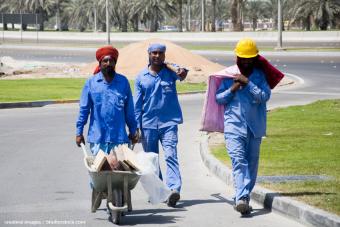Circular Migration
Recent Activity
The launch in Bangkok of an issue brief series on labor migration in Asia undertaken by MPI and IOM with speakers H.E. Phadermchai Sasomsub, H.E. Kazi Imtiaz Hossain, H.E. Linglingay Lacanlale, Andrew Bruce, and Dovelyn Rannveig Agunias.
This brief examines the complex issues surrounding labor migration from Colombo Process countries. It discusses the progress made—and the policy challenges that remain—with regard to creating efficient and equitable labor migration systems.
Rarely is migration among the Chinese from Hong Kong, the People's Republic of China, and Taiwan to the countries of the Pacific Rim as cut and dry as the labels "immigrant," "emigrant," and "returnee" suggest. In fact, Chinese migrants from each of these areas of origin share a tendency for traversing between their homeland; country of work, study, or residence; and even a third country as the needs of the family dictate. This article examines these contemporary migration patterns using Chinese migrants in New Zealand as a case study.
الأردنية ودعم اقتصاده. وابتدأت العَمالة غير العربية الآتية من آسيا بالزيادة في السنوات الأخيرة في الأردن، وبالأخص من سريلانكا والفِليبّين.
Migrants from the Philippines and Sri Lanka have taken on a growing role in filling labor shortages in Jordan, leading to significant challenges surrounding the recruitment of these foreign workers. Based on interviews with government officials in sending and receiving countries and focus groups with migrants, the report analyzes the role of private recruitment agencies and points to oversight gaps.
This discussion examines the overseas labor deployment system created by the Philippines, one of the largest and most sophisticated of its type, providing a framework for regulating recruitment.
The United Arab Emirates (UAE) is the third-largest destination for Filipino migrants, with private recruitment agencies in both countries managing the flow of 200,000 Filipino workers who head there annually. This report examines the recruiters’ practices as well as their regulation by the Philippine and UAE governments, offering recommendations to strengthen the system of oversight.
Five factors, including wages and professional development, drive skilled people to migrate, and three reasons encourage them to return. Laura Chappell and Alex Glennie of ippr in London look at all of these factors and how motivations vary across different contexts and groups of migrants.







